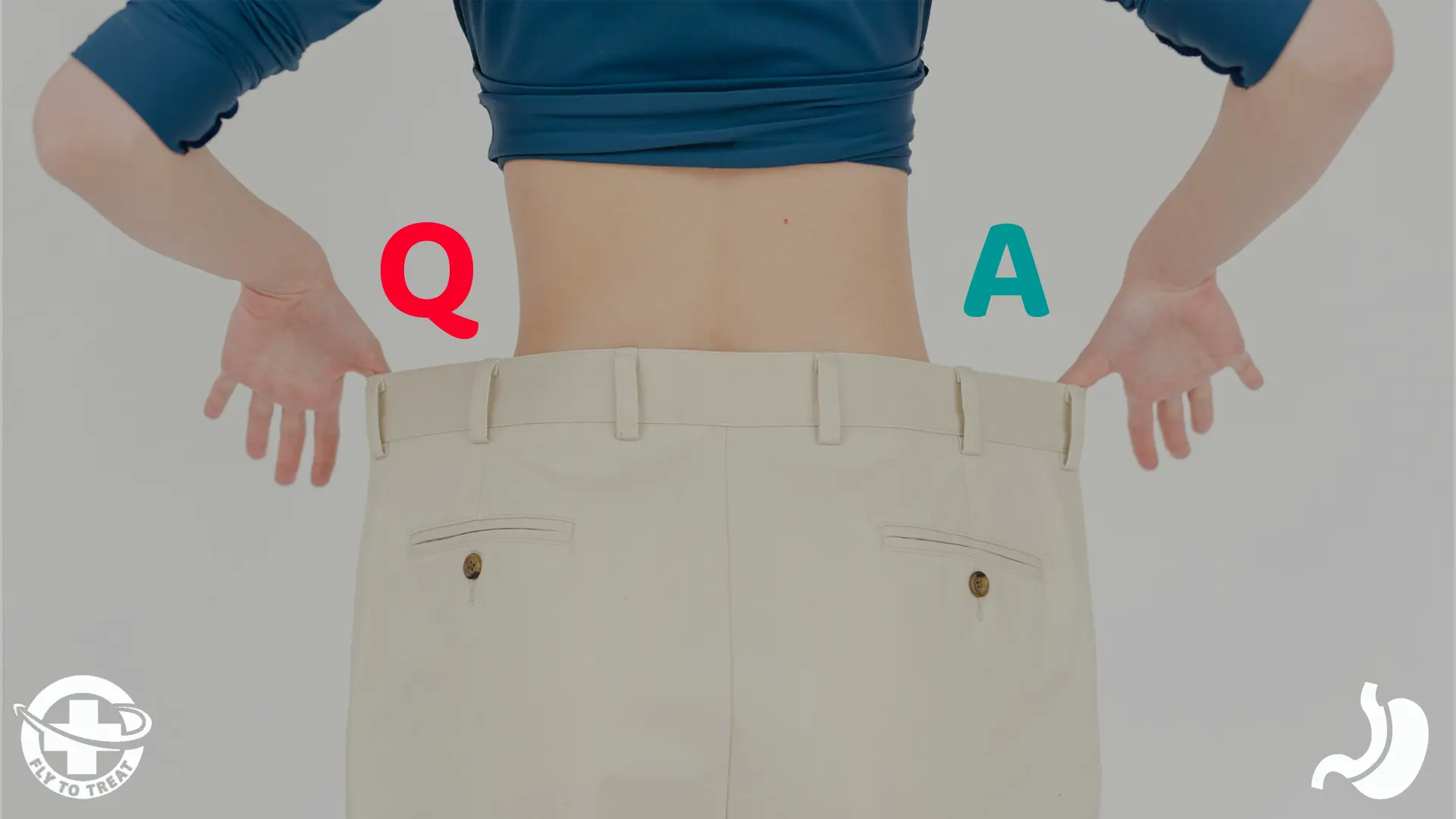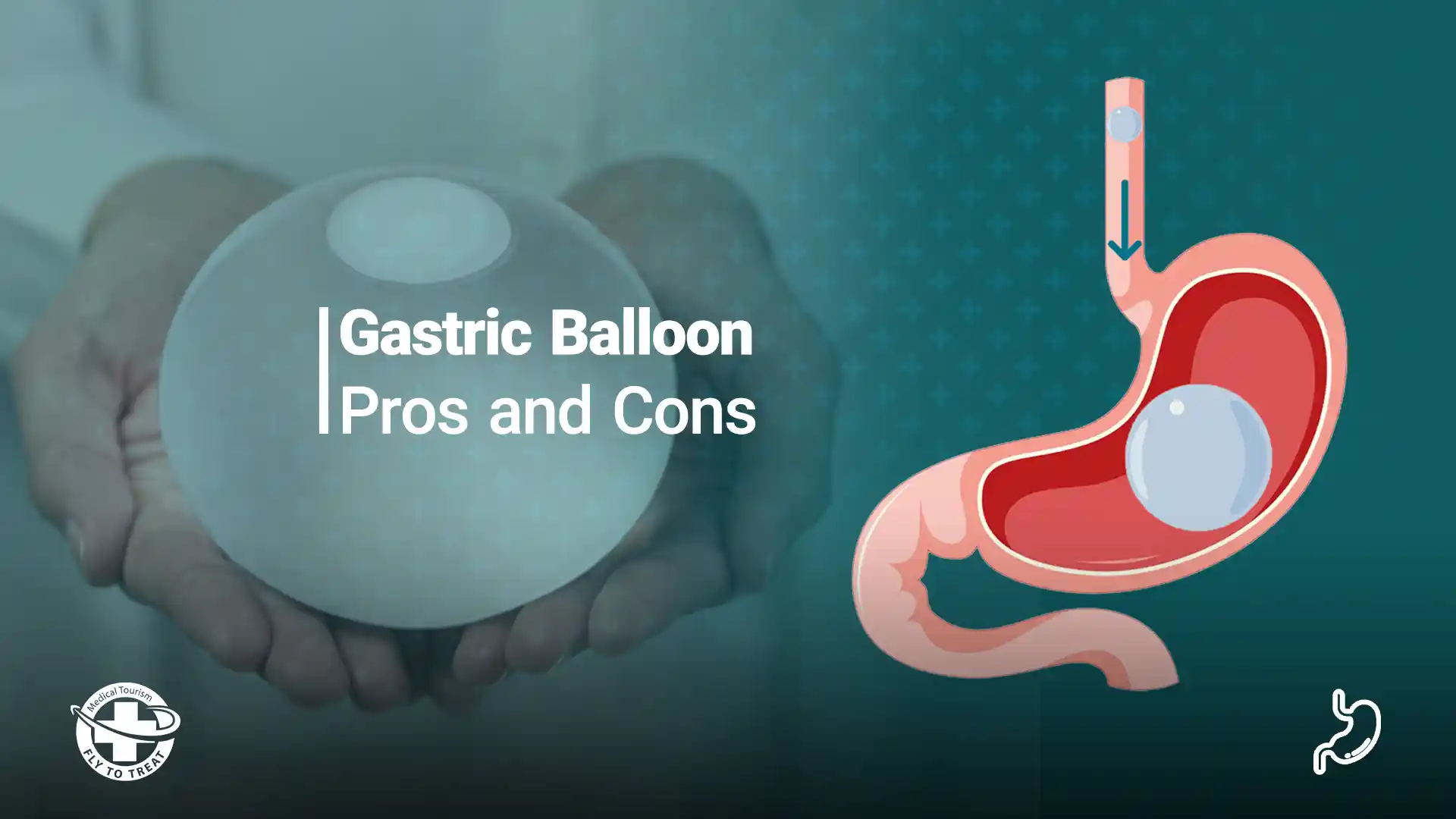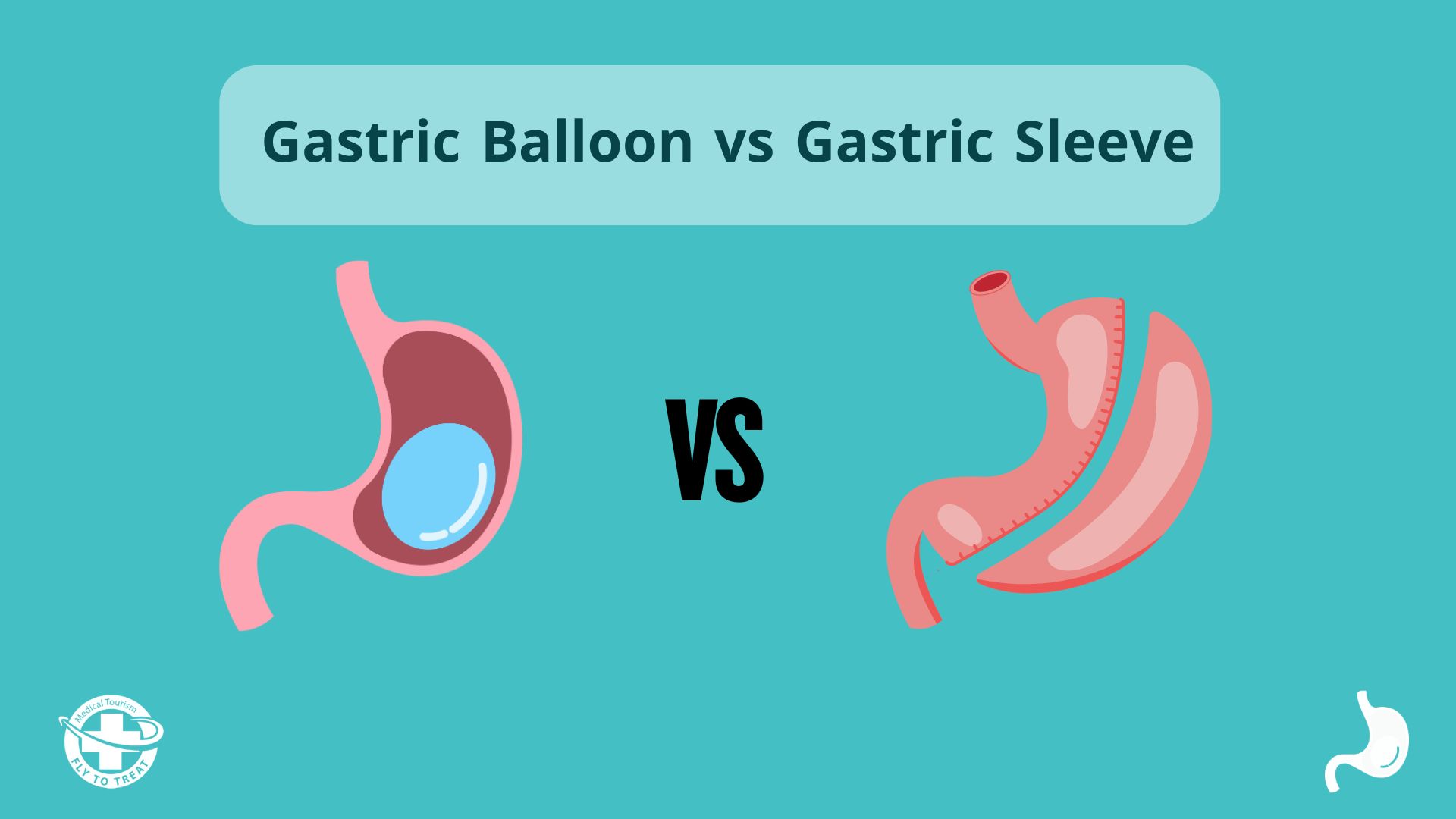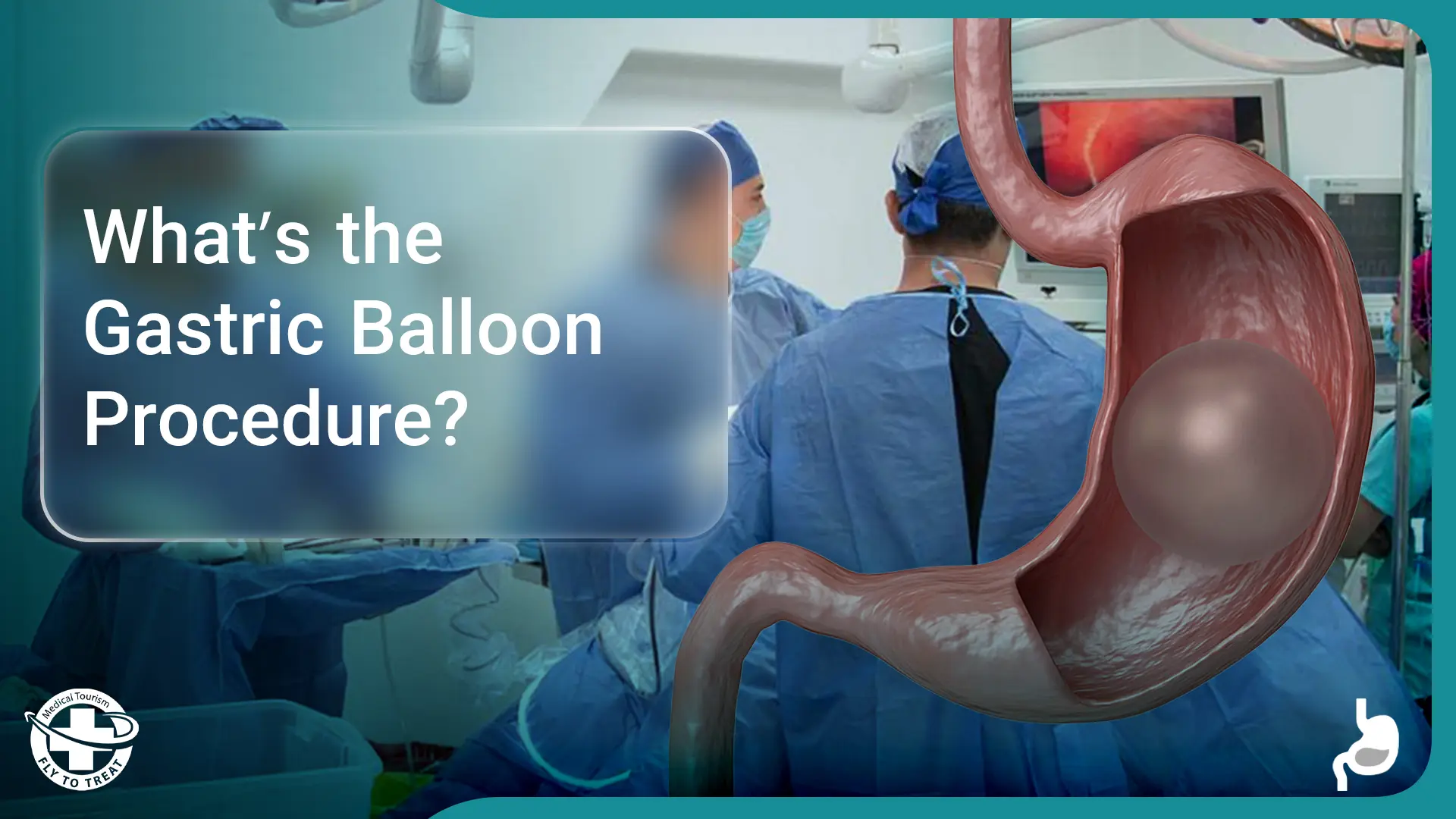
What’s the Newest Weight Loss Surgery?
Ongoing improvements in bariatric surgery have shortened recovery periods and greatly enhanced patient outcomes. More significantly, patients can now have operations with little to no chance of serious side effects and with surgical methods that cause little to no pain.
One of the newest weight loss surgery options is endoscopic sleeve gastroplasty (ESG). It is intended to decrease the size of your stomach. Because it's done via an endoscope, there won't be any cuts or scars. Compared to surgery, endoscopy has fewer side effects.
The endoscopist attaches a suturing device to the endoscope to suture off a section of your stomach. Because the suturing device draws the stomach's folds together accordion-like, ESG is frequently called accordion surgery.
Learn more about: “Is there a non-surgical gastric sleeve?”
This article discusses different types of weight loss surgery options and the latest and newest techniques. It also answers questions such as, "What is the new non invasive weight loss surgery?" "What is the safest form of weight loss surgery?" and "What is the latest technology for weight loss surgery?"
FlytoTreat, a famous health treatment and tourism facilitator, helps you discover the best treatment option and provides you with the required consultations; for example, if you have the question, What is the best non-invasive way to lose weight? in mind, it also companionship throughout your path to achieving it.
For a free consultation, Click here.
Table of Contents
Weight Loss Surgery Different Types
Weight loss surgery, also known as bariatric surgery, includes several types of procedures designed to help individuals with severe obesity lose weight. Each new type of weight loss surgery has a different approach to achieving weight loss, but all aim to reduce the amount of food the stomach can hold, alter digestion, or both.
Learn more about the most common and new type of weight loss surgery, plus their advantages and disadvantages, in the following:
1. Gastric Bypass (Roux-en-Y Gastric Bypass)
This is one of the most common and effective weight loss surgeries. It involves creating a small pouch from the stomach and rerouting the small intestine to this pouch, bypassing a large portion of the stomach and intestine. It limits food consumption and decreases the absorption of calories.
Advantages: significant and long-term weight loss, improvements in obesity-related conditions (e.g., type 2 diabetes, high blood pressure).
Disadvantages: risk of complications (e.g., bowel obstruction, ulcers), need for lifelong nutritional supplementation, more complex than other latest weight loss procedures.
2. Sleeve Gastrectomy (Gastric Sleeve)
In this procedure, a large portion of the stomach is removed, leaving a smaller, sleeve-shaped stomach that can hold less food. It reduces stomach capacity, so patients feel full with smaller portions.
Advantages: Simpler than gastric bypass, no rerouting of the intestines, significant weight loss, fewer long-term complications.
Disadvantages: Irreversible, potential for vitamin deficiencies, risk of acid reflux.
You may also want to read: “Who is a Good Candidate for Gastric Sleeve Surgery?”
3. Adjustable Gastric Band (Lap-Band)
An adjustable band is placed around the upper part of the stomach, creating a small pouch that limits the amount of food you can eat. This band restricts food intake by making the stomach feel fuller faster.
Advantages: Reversible, less invasive than other surgeries, adjustable.
Disadvantages: Slower weight loss, risk of band slippage or erosion, need for follow-up adjustments, less effective long-term.
4. Biliopancreatic Diversion with Duodenal Switch (BPD/DS)
This is a more complex procedure involving two parts: a sleeve gastrectomy (removal of a large portion of the stomach) and a bypass of the small intestine, which limits both food intake and nutrient absorption. It leads to significant weight loss due to both restriction and malabsorption.
Advantages: Very effective for long-term weight loss and improvement of obesity-related conditions.
Disadvantages: Complex and high-risk surgery, significant nutritional deficiencies, requires strict lifelong follow-up and supplementation.
5. Mini-Gastric Bypass (One-Anastomosis Gastric Bypass)
A simplified version of the traditional gastric bypass, where the stomach is divided into two parts, and a small portion is connected to the small intestine. It reduces stomach size and alters digestion to limit food intake and nutrient absorption.
Advantages: Effective weight loss, simpler than the traditional gastric bypass, fewer complications.
Disadvantages: Still involves rerouting the intestines, some risk of long-term complications.
6. Duodenal Switch
This is a combination of sleeve gastrectomy and a bypass of the small intestine. It limits food intake and absorption of nutrients.
Advantages: Significant weight loss and long-term success, effective for people with severe obesity.
Disadvantages: Complex, high risk of nutritional deficiencies, requires lifelong monitoring and supplementation.
What are the Non Invasive Weight Loss Surgeries?
The following options are considered as non-invasive or minimally invasive than the other surgeries, which typically involve significant changes to the stomach or intestines and require incisions.
1. Endoscopic Sleeve Gastroplasty (ESG)
This minimally invasive procedure uses an endoscope to stitch the stomach into a sleeve shape without removing any tissue. It restricts food intake by reducing stomach size.
Advantages: No incisions, quicker recovery time, less risk of complications than traditional surgery.
Disadvantages: Temporary pain with nausea and heartburn.
2. Robotic Gastric sleeve Surgery
Robotic gastric sleeve surgery makes smaller incisions through the use of innovative technology. The surgeon operates the robot by controlling its arms while sitting at a console in the same room as the patient.
Advantages: minimally invasive, increased range of motion with flexible robotic instruments. Faster recovery with shorter hospital stays and quicker patient recovery.
Disadvantages: Requires specialized training, as not all surgeons are familiar with the newer technology. Besides, the surgeon does not feel the tissues, relying solely on visual cues during surgery.
3. Gastric Balloon
Depending on gastric balloon costs by types, a silicone balloon is placed in the stomach, where it is filled with saline to reduce stomach capacity. The balloon takes up space in the stomach, making you feel fuller faster.
Advantages: non-surgical, temporary (usually removed after 6 months), simple procedure.
Disadvantages: temporary weight loss, risk of balloon deflation or discomfort, potential for nausea or vomiting.
You may want to learn about: “What are Gastric Balloon Pros and Cons?”
What is the Latest in Weight Loss Surgery Method?
Robotic surgery is the most recent alternative for weight loss surgery. Robotic gastric sleeve makes smaller incisions with the help of innovative technology. The surgeon operates the robot by manipulating its arms while seated at a console in the same room as the patient. The surgeon can see clearly thanks to the robot's 3D cameras.
To help with the surgery, a team of professionals joins the patient and surgeon in the operating room. Depending on the patient and treatment, bariatric surgeons at Washington University may use an open, laparoscopic, or robotic technique while performing weight loss surgery. Each patient's optimum surgical course of action is determined after an individual evaluation.
How Does the Latest Technology for Weight Loss Surgery Work?
In the operating room, your surgeon is seated at a console close to you while using the Da Vinci system, which is robotically assisted surgery. The surgeon controls the tiny instruments and camera required to execute your surgery through a few fingertip-sized incisions via the console.
The 3D high-resolution images the technology provides offer your surgeon a clear, ten-fold magnified perspective of the operating site. Every action your surgeon makes is processed in real-time by bending and rotating tools with a broader range of motion than a human hand. Thanks to built-in tremor filtration technology, your surgeon moves each instrument with perfect accuracy.
Is the New Weight Loss Surgery Less Invasive?
Yes, endoscopic sleeve gastroplasty is the more recent form of minimally invasive weight-loss surgery. With endoscopic sleeve gastroplasty, there are no cuts. Instead, a suturing tool is passed down to the stomach from the throat. The stomach is then attached to reduce its size by the endoscopist.
Here’s how it works:
The surgery involves the removal of about 75-80% of the stomach, leaving behind a tube-like structure (sleeve). This reduces the stomach’s capacity, making you feel fuller faster and eat less. It involves rerouting part of the small intestine so that food bypasses a portion of the duodenum and proximal jejunum. This leads to reduced calorie and nutrient absorption, which aids in weight loss.
Read more: “Is there a non-surgical gastric sleeve?”
Is New Weight Loss Procedure Without Surgery?
No, even though the procedure doesn’t require cutting and reshaping parts of the stomach and intestine as dramatically as older weight loss surgeries like the Roux-en-Y gastric bypass, it is still a surgical option and requires careful consideration with the help of a medical professional. The goal of the surgery is to help with significant weight loss by reducing stomach size and limiting nutrient absorption.
Instead, gastric balloon is a non-surgical procedure perfect for those looking for a practical weight loss treatment, which is available in different gastric kinds depending on gastric balloon costs by type. However, it also depends on people’s individual conditions and “who is a candidate for gastric balloon?”
For a free consultation regarding which type of weight loss option is suitable for you, click here
What is the New Non Invasive Weight Loss Surgery?
A less invasive technique and a new weight loss surgery 2025 is endoscopic sleeve gastroplasty(ESG). This technique does not involve cuts. Instead, a suturing instrument is passed down to the stomach from the throat. After the procedure, the endoscopist stitches the stomach to reduce its size.
With Endoscopic Sleeve Gastroplasty, you can lose weight by shrinking your stomach. Unlike bariatric surgery methods such as gastric sleeve surgery, this procedure is non-surgical.
As mentioned above, ESG enables a medical professional to access and alter your stomach without making any cuts. They can do this by inserting an endoscope—a long, thin tube with a tiny camera attached—down your neck and into your stomach.
If diet and exercise have failed and you are considerably overweight (body mass index of 30 or above), endoscopic sleeve gastroplasty can be a possibility among weight loss surgery options. This technique helps you lose a lot of weight by restricting your food intake.
Furthermore, the procedure's minimally invasive nature lowers the possibility of problems and enables a prompt return to regular activities.
Conclusion
As the field of weight loss surgery options continues to evolve, procedures like endoscopic sleeve gastroplasty (ESG) represent a significant step forward in offering non-invasive options for those struggling with obesity. With the ability to reduce stomach size without the need for traditional incisions, ESG presents a promising alternative for individuals seeking effective weight loss with quicker recovery times and fewer complications.
However, there are other weight loss surgery options, such as gastric balloons, which require no surgery and are less invasive. To make the best decision for your weight loss treatment, you can consult with FlytoTreat’s qualified consultants, who will provide you with the option that suits you best. For a free consultation, Click Here.
MEDICALLY REVIEWED BY: Dr. Ali Bazazi
AUTHOR: FlytoTreat's team of Authors
23 February 2025 - Updated At: 23 February 2025
Related Articles
Related Services
Comment




















